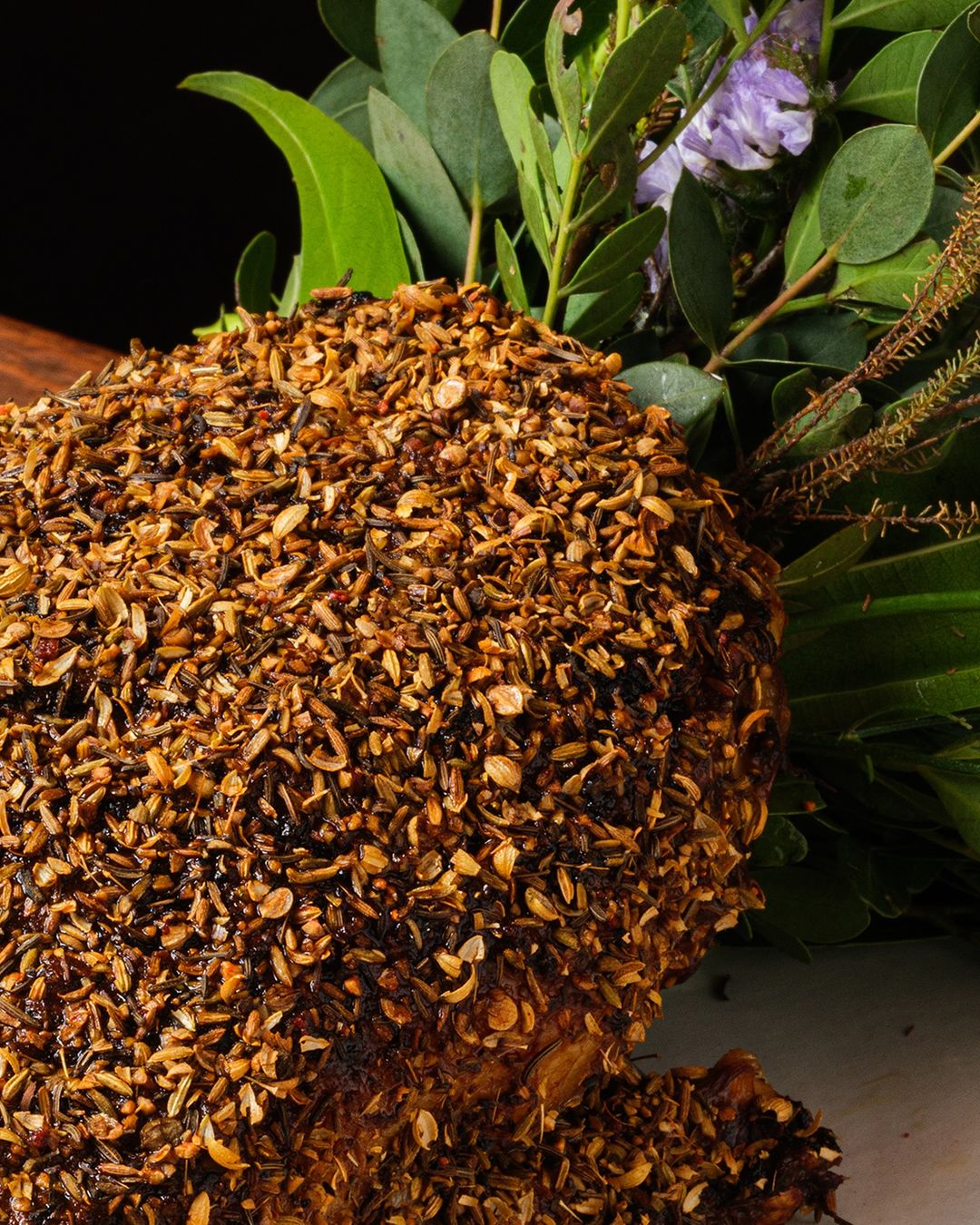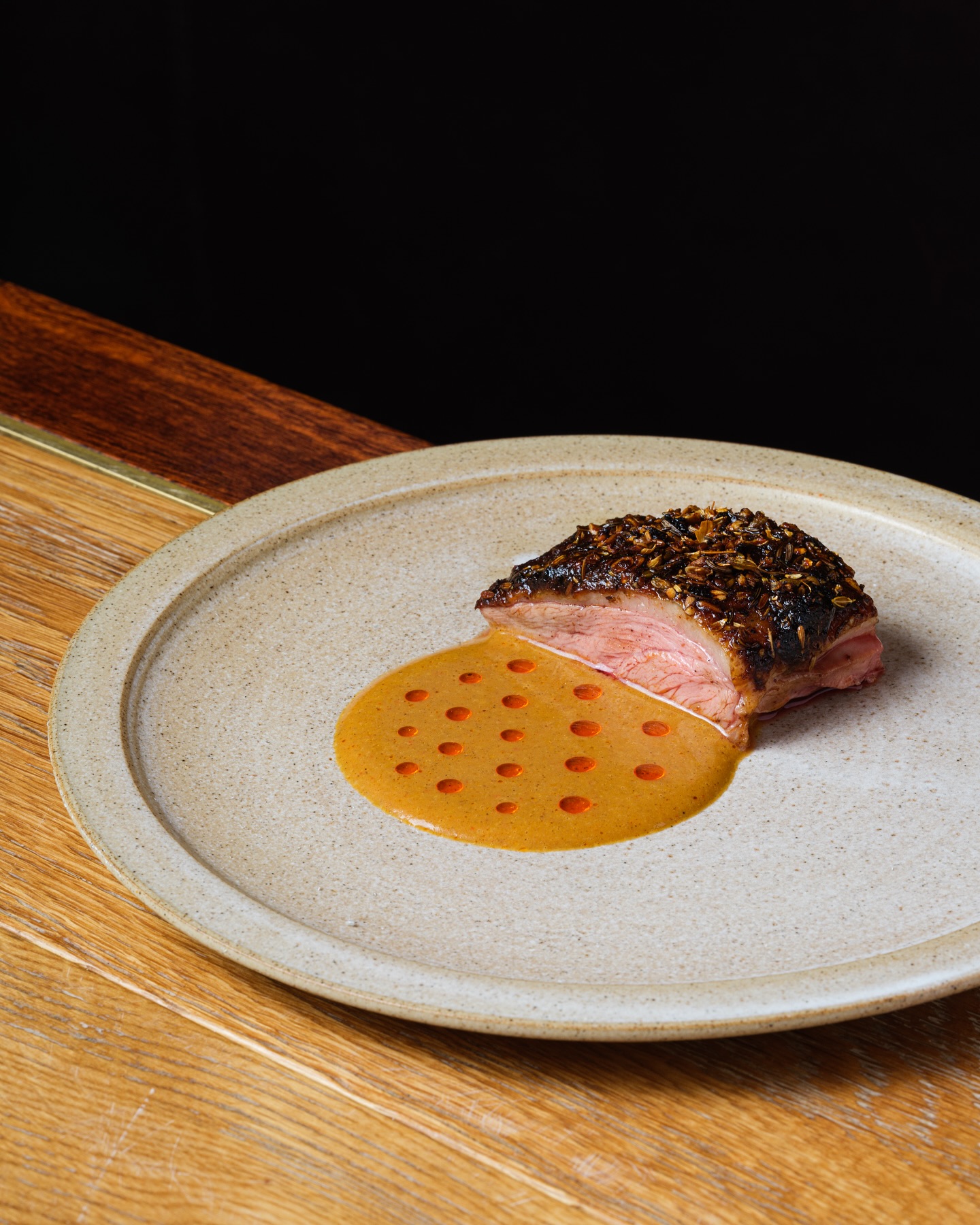

Mughal Duck
Mughal duck, a recipe from the archives of the British Library and one of many discoveries unearthed from Chet’s recent return to the world of academia, charting the culinary escapades of the Mughal empire.
This roast duck tells a tale of the Mughal elites and their complex, hierarchical, and vibrant food culture. Cuisine was of utmost importance, and proper consumption was considered close to godliness. To attempt to synthesise this here would be unwise, but we suggest you explore the writing of Dr Neha Vermani, the historian with whom Chet conducted this research.
The story here, however, is quite simple. Akbar the Great – and yes, like naan bread, we know this means the great the great – a Mughal emperor, found himself suitably embarrassed as he feasted at his cousin’s home. Upon being presented with a whole roast duck at the table and asked to carve, he floundered. His shame was depicted in the annals – specifically a Mughal etiquette guide – to warn others should they befall the same fate.
Though whole roast birds – and therefore the art of carving – might seem a staple in Western traditions, it’s not commonly associated with Indian cuisine, sparking Chet’s interest. What you see here is his rendition of Akbar’s adversary, done the BiBi way.
Creedy Carver ducks are aged for 24 days, then scored and blowtorched to begin to render the fat. The birds are steamed at low heat for several hours, before salting and leaving to dry overnight.
The next day it’s straight into a hot oven, ensuring the essential crispy skin and blushing flesh. The duck is then crusted in an Indian five spice – white peppercorns, royal cumin, nigella, fennel, and yellow mustard seeds – and glazed frequently with its juices.
The previously rendered fat becomes the base for a ‘brown stew’ – also an old Mughal recipe – finished with yoghurt to form the sauce for the dish. When the duck is done roasting it is rested and presented to the table.
Don’t worry, we won’t ask you to carve.